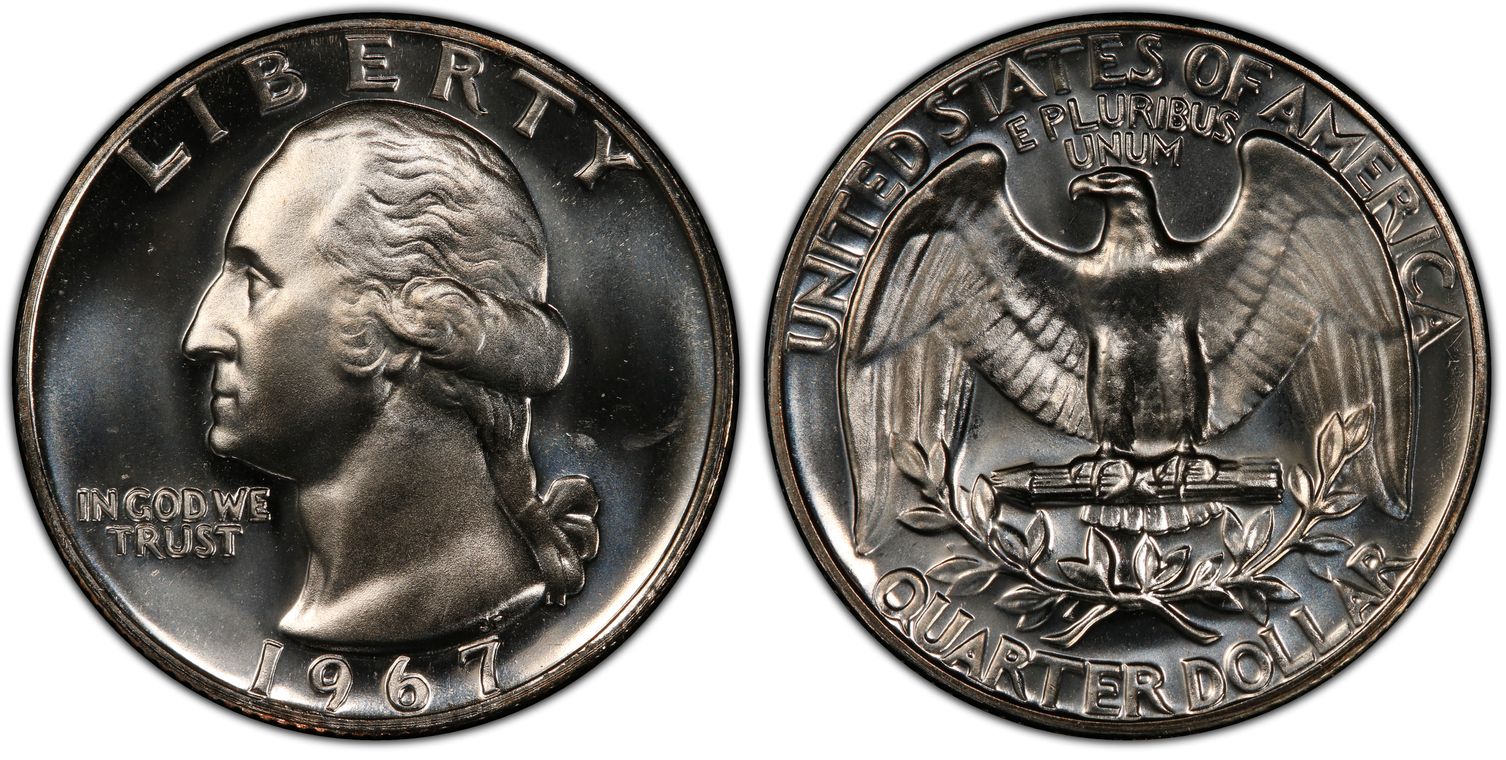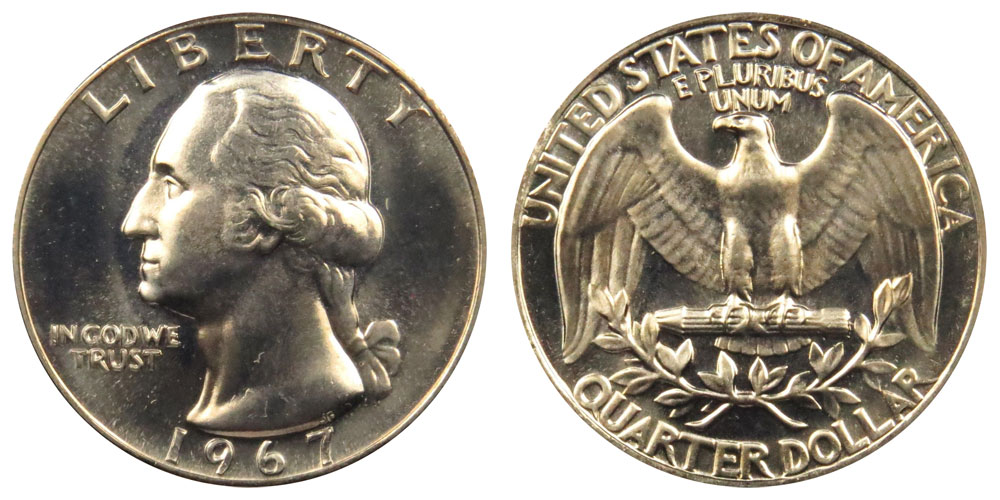1967 Quarter Value: Key Date Washington Quarter
The 1967 Washington quarter is worth roughly $7.50 to $10 in mint state condition. In higher mint state grades, a circulation strike can range from $25 to $150.
In the upper echelon of grades MS-68 and higher, the coins are very scarce and could fetch several hundred dollars to over a thousand dollars.
Below is a full price chart for 1967 quarters. The sections of the article below will explain these different types of the 1967 quarter dollar coin in greater detail.
1967 Washington Quarter Price Chart
1967 SMS Quarters
Technically, there are no proof Washington quarters from the years 1965, 1966, or 1967. In lieu of proof coins for those years from 1965–1967, the U.S. Mint instead released a limited number of Special Mint Sets (SMS). These sets included one coin of each denomination, much like the proof mint sets that many collectors are familiar with.

1967 SMS Washington quarter. Image: PCGS
The SMS quarters bear more of an uncirculated matte finish, some with frosted devices, than the typical mirrored proof version. All 1967 SMS quarters were struck at the San Francisco Mint. The total mintage of these sets was just 1,863,344.
An SMS example of the 1967 quarter garners $10 to $15 in grades of MS-65 and above. Its prices are as high as $150 for MS-69.
Cameo Quarters
However, if the coin earns the much rarer "Cameo" or "Deep Cameo / Ultra Cameo" designation, prices jump significantly. These coins can auction for close to $2,000 for MS-69 Cameo and well over $3,000 for MS-68 Ultra Cameo (abbreviated "UCAM"). You will find values for these coins at the bottom of the price chart above.
The Cameo and Ultra Cameo descriptors refer to the coin having a deeper reflectivity that produces a strong contrast between the background and the relief elements (the raised portions of the design). This effect is often seen with normal proof coins, but it is very rare for a coin from a Special Mint Set to receive such grades.
More Background About 1967 Quarters

1967 Washington quarter. Image: USA CoinBook
Interestingly, no 1967 quarters have mintmarks. The branch mints in San Francisco and Denver still produced them, but the U.S. Mint made the decision in 1965 to stop including "D" or "S" mintmarks on the coins.
These small letters were removed in order to discourage the public from collecting or hoarding the coins—instead of spending them, as they were intended. Mintmarks returned to the quarter in 1968.
With the absence of mintmarks, there's virtually no way to tell which mint a particular coin came from. Over 1.5 billion quarters were struck in 1967: 1,524,031,848 in total.
At the highest-known grade of MS-68, the non-SMS 1967 Washington quarter is actually more valuable than its SMS counterpart. That is because far fewer of the circulating quarters were preserved to survive in this good of condition. By contrast, many SMS quarters were saved and maintained in mint state because the sets were made specifically as collectibles.
When visually determining the condition of a Washington quarter, the key point of focus is the amount of detail in George Washington's hair. This area is normally the first place where wear occurs in the design.
1967 Quarter Errors and Values
There are at least two well-known types of errors that have been discovered on 1967 quarters.
A doubled die error is, relatively speaking, the most common kind of error you will find on these coins. They can be distinguished by a doubling effect on elements of the design, especially the inscriptions (the lettering). 1967 doubled die quarters can be worth upwards of $100.
Another known error is the off-center strike, also known as a collar error. This type of error coin is also valuable, and could be worth well over $100.
Read more about the values of various coins from the numismatic experts at Gainesville Coins:
1960s Quarters Worth Money: Collecting Advice
What's the Value of a 1970 Quarter?
17 Most Valuable Quarters: Price List With Pictures
Rare Washington Quarters: Key Dates & Varieties
Bicentennial Washington Quarter Value: Coin Values & Value Chart

Everett Millman
Everett has been the head content writer and market analyst at Gainesville Coins since 2013. He has a background in History and is deeply interested in how gold and silver have historically fit into the financial system.
In addition to blogging, Everett's work has been featured in Reuters, CNN Business, Bloomberg Radio, TD Ameritrade Network, CoinWeek, and has been referenced by the Washington Post.
